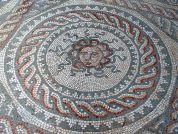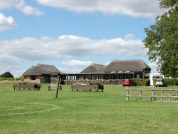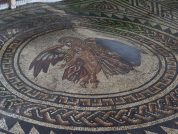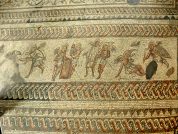Bignor Roman Villa
Villa
Bignor Roman Villa is a large Roman courtyard villa which has been excavated and put on public display on the Bignor estate in the English county of West Sussex. It is well known for its high quality mosaic floors, which are some of the most complete and intricate in the country. The villa is situated just north of the South Downs close to Stane Street (Chichester), about nine miles northeast of Chichester (Noviomagus Reginorum) and the nearby and much larger Fishbourne Roman Palace .
History of Bignor Roman Villa
As with most Roman villas, the site evolved over several centuries, starting life as a simple farmstead with timber buildings in c 190 AD.
During the 3rd century, a masonry building was constructed comprising of just four rooms, which formed the basis of the west wing of the final site. This was extended between c.240 and 290 AD with the northern and southern wings were added, and then it was extended further still by the addition of an eastern wing. The final building now formed a complete square around a central courtyard, and comprised some 65 rooms in the main complex, with another nine rooms located in various outbuildings.
The later history and decline of the building is not well documented and, at present, the assumption is that the site gradually declined in status, rather than suffering a catastrophic fate, such as the fire that destroyed most of Fishbourne Palace.
What can you see at Bignor Roman Villa?
The majority of what remains today comprise the rooms in the western end of the north wing, and the bathhouse in the south eastern corner. These rooms, including the changing area of the bathhouse, contain some of the best preserved Roman mosaics in England, including the remains of the north corridor mosaic which extends some 79ft (24m) and would have originally run the complete length of the wing.
There is a summer and a winter dining room (one was heated underfloor, one was not), the summer room containing a beautiful mosaic of Ganymede being carried by an eagle from Mount Ida. The winter dining room also displays a fabulous mosaic depicting Venus and the gladiators but, unfortunately, the lower panel has suffered some destruction, due to the floor collapsing into the underfloor hypocaust. All eleven rooms open to the public have mosaic floors that have survived to varying degrees, and all very impressive even now. It is difficult to imagine just how sumptuous these would have looked in Bignor Roman Villa’s heyday.
The bath complex in the south eastern corner was accessed through the Medusa room – a changing area – which contains a particularly nice mosaic with the head of the gorgon at its centre. This mosaic is quite unusual in that it is bordered by square red tiles and black shale slabs. The baths form the traditional layout of warm rooms, hot room and cold plunge pool.
The Greek-key-patterned northern corridor extends for some 79 ft (24m) making it the longest in Britain.
Mosaics at Bignor Roman Villa
The Bignor Roman Villa mosaics are considered to be some of the finest examples of Roman mosaics in Britain. They were created in the 2nd and 3rd centuries AD and depict a range of subjects, including mythical scenes, animals, and geometric patterns.
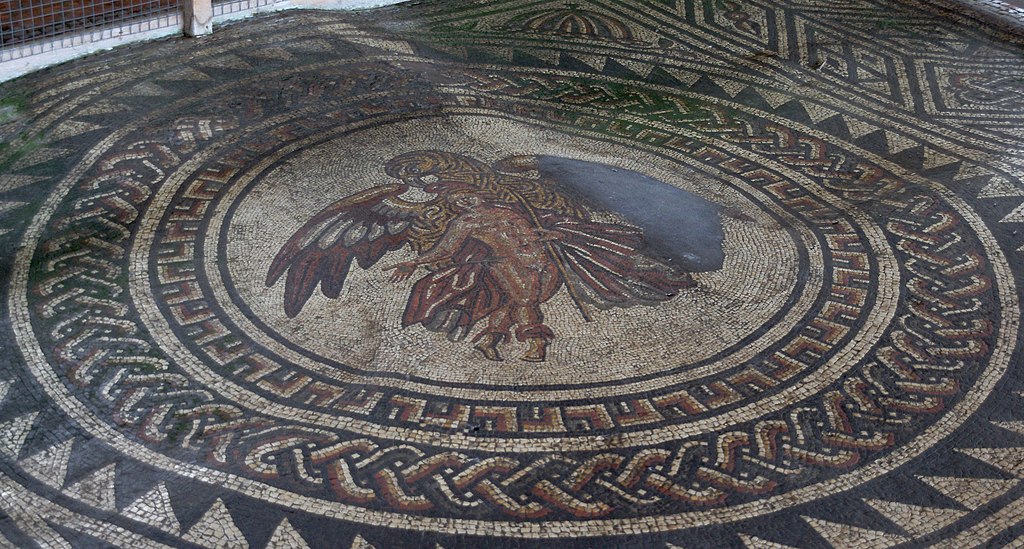
One of the most famous mosaics at Bignor is the “Ganymede mosaic”. It is in a large room known as the summer dining, or Ganymede, room. The mosaic shows the young Ganymede being taken away by an eagle to serve as a cup-bearer to the Gods. Ganymede’s Phrygian cap will be familiar to anyone who has seen images of the God Mithras.
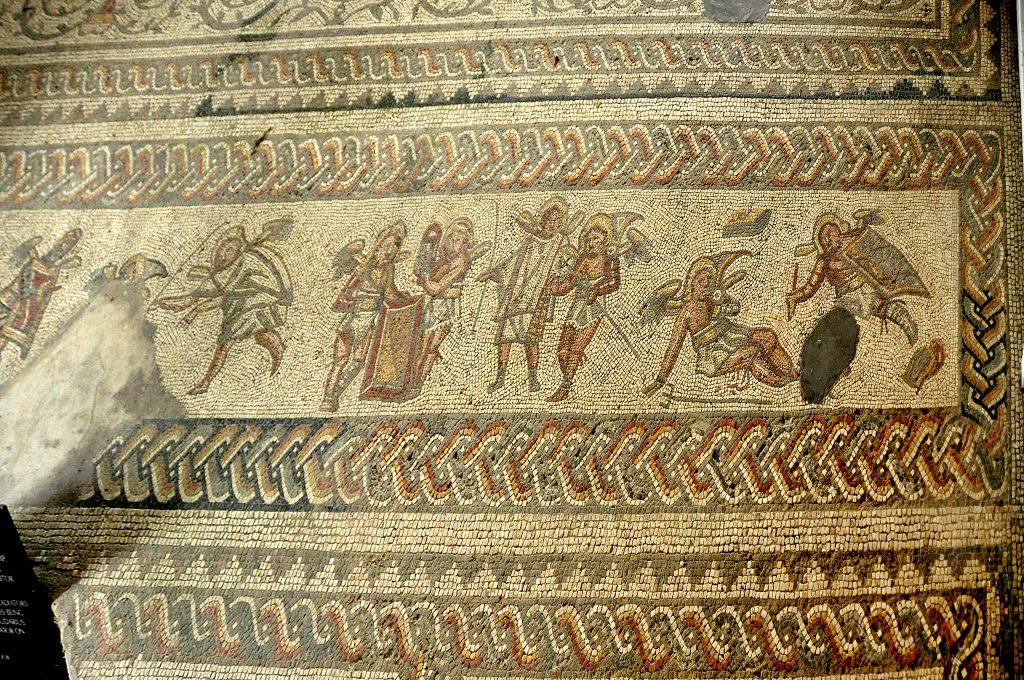
Another distinctive mosaic to look of for at Bignor Roman Villa is the “Gladiator Mosaic”. The Gladiator Mosaic feature a number of cupids (erotes) as gladiators and there are some which have glass tesserae in them.
How was Bignor Roman Villa discovered?
The Roman villa at Bignor was discovered in 1811 when George Tupper, whilst ploughing his field, struck a large stone believed to have been the piscina in the Ganymede room. A local man, John Hawkins, and a leading antiquary, Samuel Lysons, commenced excavation work shortly afterwards and had uncovered moreorless the entire site by 1819, coinciding with the death of Samuel Lysons. No further work was carried out at Bignor Roman Villa until 1925.
Visiting Bignor Roman Villa
The villa is open on Saturday and Sundays 10am – 4.30pm, Tel 01798 869 259
Visiting Bignor Roman Villa by Car: Bignor Roman Villa is located in the heart of the South Downs and can be reached most easily by car. Signs indicating the way to the villa can be seen before Bury Hill on the A29 in the east and before Duncton Hill on the A285 further west. The journey to the villa along small, winding roads offers stunning views of the picturesque Sussex countryside. Visitors may park on site.
Visiting Bignor Roman Villa by Public Transport: The closest train station is Amberley, which is located 3.3 miles south of Bignor village. Additionally, the 99 bus route stops directly outside the main entrance of the villa, but must be pre-booked.
Sites near Bignor Roman Villa
- Hardham Roman Settlement (5 km)
Mansio and Minor Settlement - Findon Temple (13 km)
Temple Or Shrine - Chanctonbury Ring Hill Fort (15 km)
Iron Age Hillfort and Temple Or Shrine - Chanctonbury Ring Temples (15 km)
Temple Or Shrine - Chichester (Noviomagus Reginorum) (16 km)
British Capital and Port - Fishbourne Roman Palace (Villa Regis Cogidubni) (18 km)
Supply Depot and Villa - Iping Settlement (18 km)
Mansio - Lancing Down Temple (21 km)
Temple Or Shrine - Bosham Harbour (Magnus Portus) (21 km)
Port - Alfoldean (22 km)
Mansio and Minor Settlement
